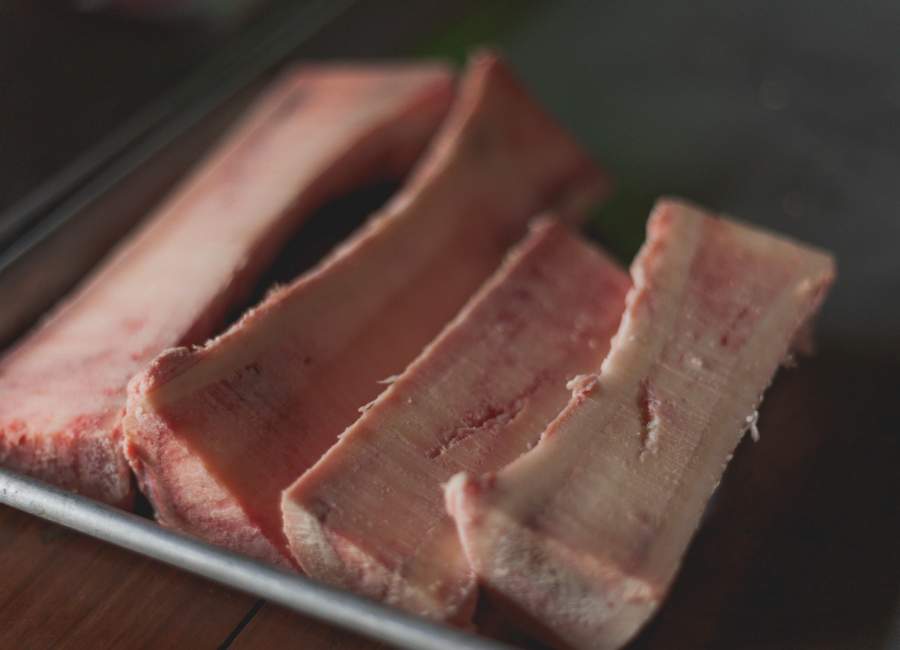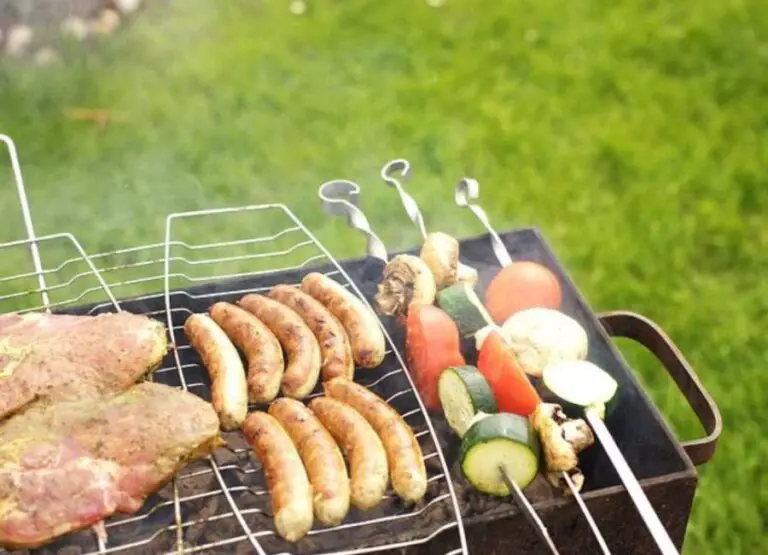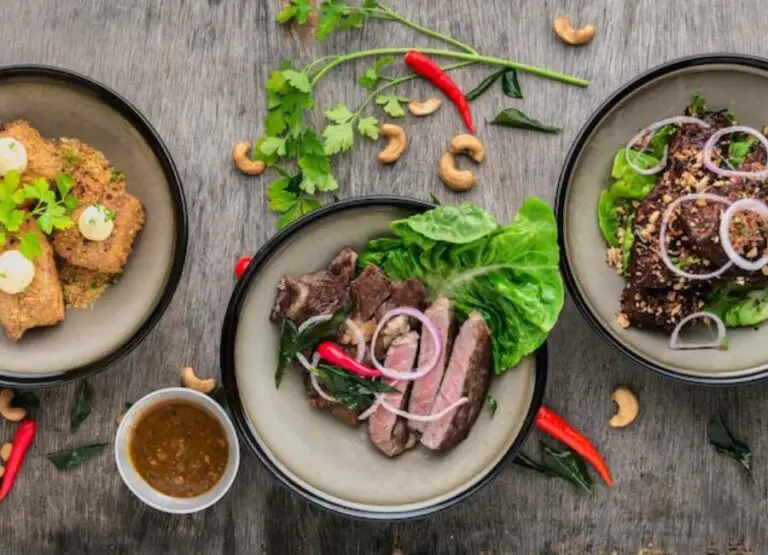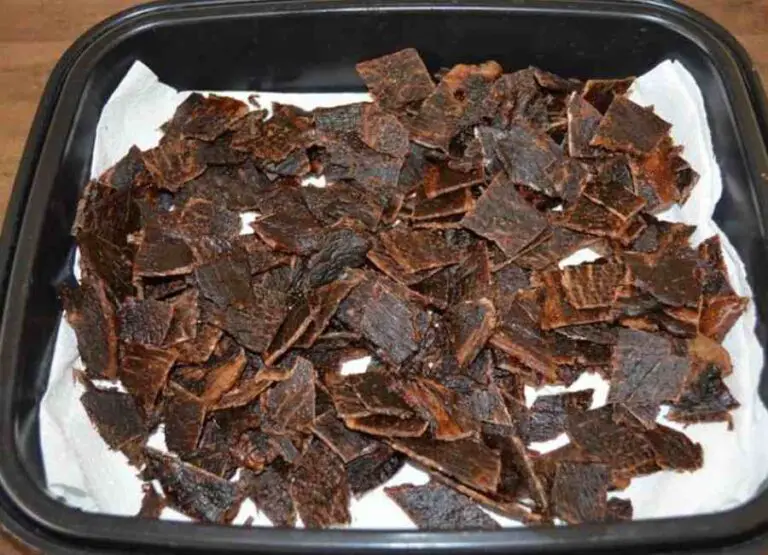Can You Dehydrate Raw Meat [Answered]
For millennia, people have preserved food for subsequent use by dehydrating meat.
Dehydrating raw meat is a typical method of preparing it, but there are a few things to think about beforehand.
In this article, we’ll talk about dehydrating raw meat, its advantages, and disadvantages, as well as the best practices for doing it safely.
This article will offer helpful information on this intriguing subject, whether you’re a seasoned dehydrator or are just getting started.
Can You Dehydrate Raw Meat
Yes, raw meat can be dehydrated. However, it is crucial to exercise additional caution since raw meat is more likely to contain dangerous germs that can result in food poisoning.
Make sure the meat is cooked through to a safe internal temperature before dehydrating it, and keep it in an airtight container to lessen the danger.
Lean meat pieces should also be used for dehydrating because fatty meats do not dehydrate as effectively.
Meat is dehydrated by taking the moisture content out to increase shelf life and make it simpler to store and transport.
To prevent deterioration and foodborne illness, raw meat has to be handled carefully, seasoned and dried to a safe temperature.
To make sure the meat is properly dried, it’s crucial to adhere to food safety regulations and utilize a food dehydrator or oven that is heated to the right temperature.
Preparing Raw Meat for Dehydration
When preparing raw meat for dehydration, it is important to make sure it is cooked to a safe internal temperature before dehydrating.
Additionally, it is important to use lean cuts of meat when dehydrating, as fatty meats do not dehydrate as well.
Furthermore, it is recommended to use a food thermometer to ensure the meat is cooked properly, and to use a marinade to improve the texture and flavor of the meat.
To prepare raw meat for dehydration, follow these steps:
- Pick fresh, high-quality meats like fish, chicken, or lean beef. Any visible fat or gristle should be removed.
- Slice or strip the meat into thin, even pieces no thicker than 1/4 inch. This will guarantee uniform drying and guard against spoiling.
- If desired, blanch the meat by quickly cooking it in salted water. By doing this, you may reduce the growth of microorganisms and enhance the final product’s flavor and texture.
- Using paper towels, pat the meat dry to get rid of any extra moisture.
- On the dehydrator trays, arrange the meat in a single layer, making sure that the pieces do not touch.
How to Dehydrate Raw Meat
This includes:
A. Equipment and Supplies
A dehydrator, meat slicer or sharp knife, cutting board, and food-grade storage containers are required to dehydrate raw meat.
B. Dehydrating Process
- Cut the meat into uniformly thin slices.
- If you want to season the meat, do it lightly to prevent the taste from becoming overpowered.
- To guarantee that dangerous germs are eliminated, preheating the dehydrator to 160°F is required.
- On the dehydrator trays, arrange the beef slices in a single layer with room between them.
- Turn on the dehydrator after setting it to the recommended temperature, which is often between 145°F and 160°F.
- Depending on the width of the slices, it typically takes between 8 and 24 hours to dry the flesh until it is stiff and leathery.
- Rotate the trays if required and check the meat frequently to make sure it is drying evenly.
- In a cold, dark location, keep the dried meat in sealed containers.
C. Drying Time and Temperature
Depending on the desired final consistency and the thickness of the slices, a dehydrator’s raw meat drying time will change.
Slices that are thinner will dry faster than those that are thicker.
As a general rule, dry the meat for 8 to 24 hours, or until it becomes stiff and leathery.
To guarantee that the meat is dried securely and uniformly, the suggested dehydration temperature for meat is between 145 °F and 160 °F.
Storing Dehydrated Meat
This includes:
A. Proper Packaging
To prevent spoiling from moisture, light, and air, dehydrated meat should be kept in airtight containers like vacuum-sealed bags or mason jars.
B. Shelf Life
Depending on how it was made and preserved, dehydrated meat has a shelf life of several months to many years.
A longer shelf life can be achieved by using appropriate storage methods such as vacuum sealing, limiting exposure to light and heat, and keeping the product in a cold, dark environment.
C. Rehydrating Dehydrated Meat
Rehydrating dried meat requires mixing in fresh water to bring back the flavor and texture of the meat.
This may be accomplished by either adding water to the cooking process or by soaking the meat in water for several hours.
It’s crucial to evenly rehydrate the meat and avoid oversoaking it because this might change its flavor and texture.
Advantages of Dehydrating Raw Meat
This includes:
- Longer shelf life: The dehydration process eliminates moisture, which bacteria and other microbes need to develop and degrade the meat, giving dehydrated meat a longer shelf life than fresh meat.
- Lightweight and Portable: Dehydrated beef is more portable and lighter than fresh meat, making it a great choice for hikers, campers, and backpackers.
- Nutritional Value: Because meat does not lose nutrients during dehydration, the majority of its vitamins and minerals are still present in dried meat.
- Cost-effective: Dehydrating meat at home might cost less than buying dry meat items that have already been packed.
- Versatile: Reconstituted dehydrated meat may be included in a wide range of dishes, including soups, stews, and sauces.
Risks of Dehydrating Raw Meat
This includes:
- Bacterial Contamination: Because Salmonella and E. coli germs may still remain on raw meat after dehydrating it, there is an increased risk of bacterial contamination.
- Cross-Contamination: If adequate hygiene and food safety procedures are not followed, the dehydration process may result in cross-contamination with other foods or surfaces.
- Loss of Nutrients: Meat dehydration can result in the loss of several vitamins and minerals, including vitamins C and B vitamins.
- Quality Deterioration: Dehydration can cause the meat’s quality to decline, resulting in an unappealing texture, taste, and overall look.
- Issues with rehydration: Rehydrating dried meat can be challenging and can leave it with a rough or chewy texture.
- Food Poisoning: If improperly dried meat includes hazardous germs or parasites that were not destroyed during the dehydration process, it may result in food poisoning.
- Time and Cost: Dehydrating meat may take a long time and be costly; it also requires specialized equipment and a lot of time and work.
- Food safety laws: The ability to sell dehydrated meat products commercially may be impacted by laws in your jurisdiction governing the sale of such items.
Safety precautions for dehydrating raw meat
When dehydrating raw meat, it is important to take the following precautions:
- Before and after handling the meat, thoroughly wash your hands and any surfaces that will come into touch with the raw meat with soap and warm water.
- Use only fresh, raw meat that has been kept at a temperature that is safe and hasn’t been left out at room temperature for an extended period of time.
- To guarantee that the meat dries completely and uniformly, slice it into thin, equal slices.
- For the purpose of eliminating any potential germs or pathogens, dehydrate the beef at 145 °F (63 °C) or higher.
- In a cool, dry location, keep the dried meat in an airtight container.
- To guarantee that any germs or pathogens are eliminated, fully rehydrate the dried meat before cooking and ingesting.
Learn more about cooking raw meat in the microwave.
Frequently Asked Questions
Can ground beef be dried out?
Dehydrating ground beef is not advised because of the significant possibility of bacterial infection, which makes it potentially unsafe. To assure the safety of the ground beef, it is best to cook it first before dehydrating it.
Can you consume raw dried meat after rehydrating it?
No, dehydrated raw meat that has been rehydrated is unsafe to consume because it may not have reached a temperature and dried for a long enough period of time to sufficiently destroy germs that can lead to foodborne disease.
Is dehydrating raw meat a successful method of preservation?
It is ineffective to dehydrate raw meat in order to preserve it since the low temperature and extended drying period do not eradicate microorganisms that might lead to deterioration.
To guarantee safety and improve shelf life, it is preferable to boil meat before dehydrating it.
Is dehydrating raw chicken safe?
Dehydrating raw chicken is not safe because the low temperature and extended drying time might not be enough to eradicate the germs that cause foodborne illnesses.
Can raw beef be dehydrated?
For the same reasons why dehydrating raw chicken is unsafe, raw beef is also not safe.
Can raw meat be dehydrated?
Yes, it is possible to dehydrate raw meat, however, it is not advised since the product could not suitable for consumption.
Because dehydrating raw meat can not achieve temperatures high enough to eradicate dangerous germs, it might endanger the safety of the product.
Learn more about old jerky beef and get sick eating them.
Conclusion
To sum up, dehydrating raw meat may be a fantastic technique to save food for later use.
To avoid foodborne disease, it is crucial to be aware of the hazards and to abide by the correct safety precautions.
When done correctly, dehydrating raw beef may produce scrumptious, enduring snacks, components for dishes, and portable meal alternatives.
It’s crucial to educate yourself on the safest methods and procedures for dehydrating raw meat, whether you’re a seasoned pro or a beginner.
Dehydrating raw meat can be a satisfying and tasty experience with the correct equipment, information, and care.
Further reading…



![How Long To Thaw Ribs in Refrigerator [24 Hours?]](https://foodcreeks.com/wp-content/uploads/2023/05/How-Long-To-Thaw-Ribs-in-Refrigerator-768x555.jpg)



